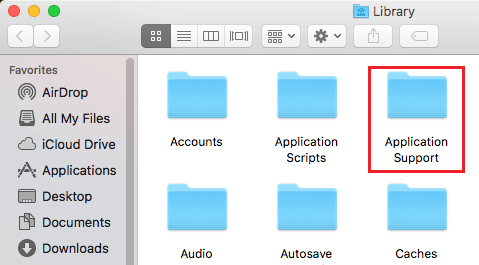Mac Library Application Support Folder
Jan 12, 2020 The Library folder contains many of the resources that installed applications need to use, including application preferences, application support documents, plug-in folders, and ever since OS X Lion, the files that describe the saved state of applications. Mar 18, 2020 In the Finder, hold down the Option key and choose Go Library. From the Application Support folder, drag the Apple Qmaster folder to the Trash. Restart your Mac. For Compressor 3.5, do the following: Quit Compressor. From the top level of your hard disk, open the Library folder, then open the Application Support Folder. I can not find them under /Library/Application Support/Google/Chrome/; Where are they? Mac Pro 10.8.4 Chrome Version 26.0.1410.65. Nov 20, 2013 Tech support scams are an industry-wide issue where scammers trick you into paying for unnecessary technical support services. You can help protect yourself from scammers by verifying that the contact is a Microsoft Agent or Microsoft Employee and that the phone number is an official Microsoft global customer service number. Tech support scams are an industry-wide issue where scammers trick you into paying for unnecessary technical support services. You can help protect yourself from scammers by verifying that the contact is a Microsoft Agent or Microsoft Employee and that the phone number is an official Microsoft global customer service number.
Sep 28, 2018 Follow these steps to find out how much storage you need to keep your entire Mac Photos Library in iCloud. Global Nav Open Menu Global Nav Close Menu; Apple. You need an iCloud storage plan with enough space for both. When you sign up for iCloud, you automatically get 5GB of free storage. Find out how much iCloud storage you need for. Icloud photo library your mac storage is full. Sign in to iCloud to access your photos, videos, documents, notes, contacts, and more. Use your Apple ID or create a new account to start using Apple services. Oct 07, 2019 How to free up storage space on your Mac Save space by storing your content in iCloud or using built-in tools to find and remove large or unneeded files. Optimized Storage in macOS Sierra and later. can save space by storing your content in iCloud and making it available on demand. Oct 23, 2016 I'm paying for iCloud and have hundreds of GB available, yet my iPhone 5c is constantly telling me I'm having storage issues, mostly caused by the Photo Library, which is taking up several GB. I have iCloud Photo Library enabled, as well as the option to 'Optimize iPhone Storage'.
Your home folder contains many files and folders that apps on your Mac have permission to read or modify. Find library folder mac os. If you use Get Info or other methods to change those permissions, you could experience issues such as these:

- Changes that you make in System Preferences aren't saved after you quit System Preferences.
- Changes that you make to the Dock aren't saved after you log out of your user account.
- Windows that were open the last time you logged out or quit an app (before you changed permissions) open again after you log in or open the app.
- You're asked for an administrator name and password when moving certain items in the home folder.
- You repeatedly get a message that macOS needs to repair your Library to run applications.
- When saving changes to an item, you get a message that the file is locked or you don't have permission to save.
- Preview, TextEdit, or other sandboxed apps unexpectedly quit when opened.
- You get an alert that the startup disk has no more space available for application memory.
- Activity Monitor shows that Safari or SafariDAVClient is using a large amount of system resources.
- Your Mac performs slowly.
- iTunes says that your device cannot be synced.
- Photos and videos that you import into Photos or iPhoto don't appear within the app, but do appear in Finder. Or your library needs to be updated or reselected each time you open Photos or iPhoto.

Reset permissions
If the issue started after changing the permissions of items in your home folder , use these steps to reset permissions.
- Turn on or restart your Mac, then immediately press and hold Command (⌘)-R to start up from macOS Recovery.
- You might be prompted to enter a password, such as a firmware password or the password of a user who is an administrator of this Mac. Enter the requested password to continue.
- When you see the macOS Utilities window, choose Utilities > Terminal from the menu bar.
- Type
repairHomePermissionsin the Terminal window, then press Return. The Repair Home app opens. - Select your user account, click Next, then enter your administrator password. Click Next unlock the volume and begin resetting permissions on your home directory.
- When done, click Exit to return to the macOS Utilities window.
- Select Reinstall macOS, then click Continue and follow the onscreen instructions to reinstall macOS.
If the issue persists
Application Support Folder Mac
If resetting permissions doesn't resolve the issue:
Mac Library Application Support Folder Free
- Make sure that you have a backup of your Mac, then erase your startup disk.
- When done, reinstall macOS.
- After installation completes and your Mac restarts to the setup assistant, create a new user account using a different name than the one you were using before. Any difference in spelling is enough.
- If you made a Time Machine backup, use Migration Assistant to restore all your files from the backup.